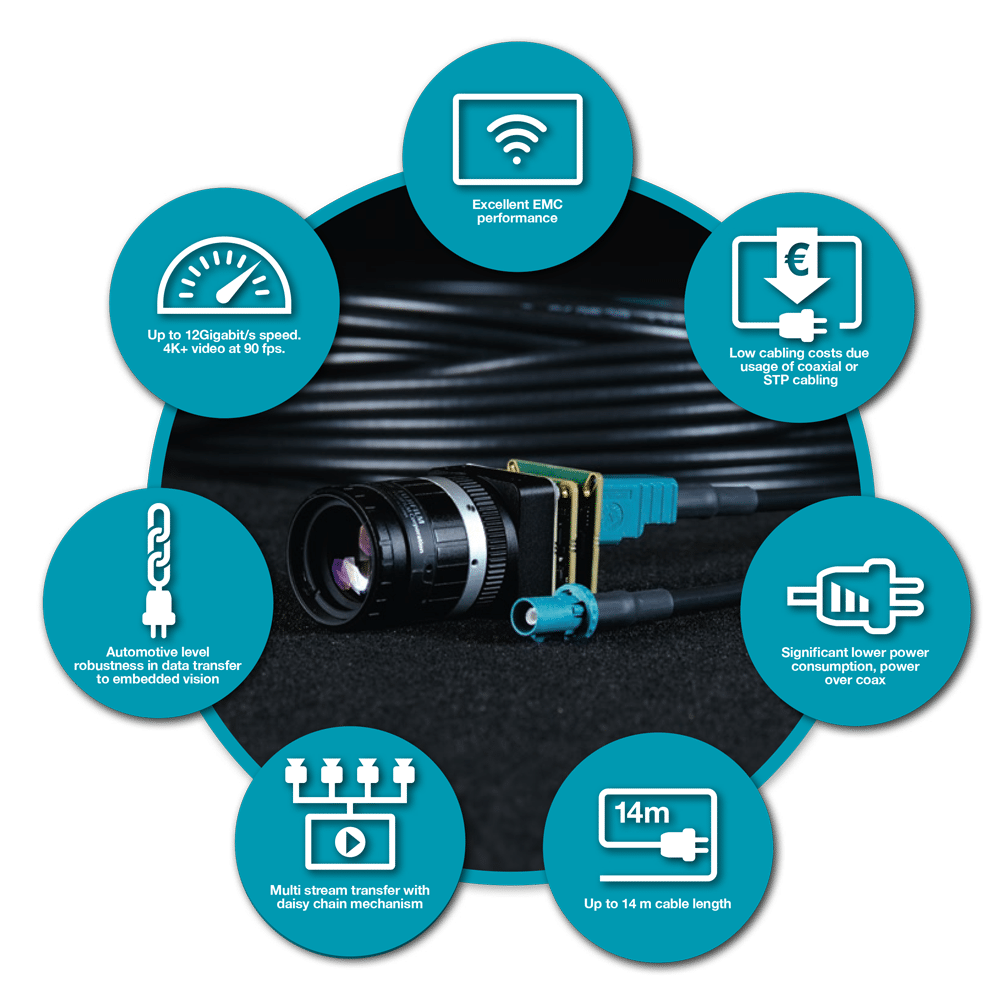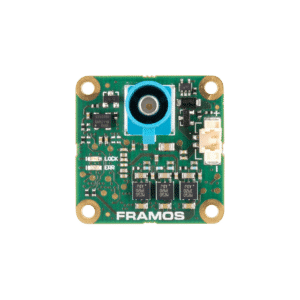Introduction
FRAMOS is the first company in the market to integrate Analog Devices’s latest generation GMSL technology into an embedded vision environment. Latest GMSL can transmit high frame rates (4K, 90 fps) as far as 14 meters with unprecedented efficiency. This interface is well suited for applications where the MIPI CSI-2 (D-PHY) length restrictions are not sufficient, while at the same time, a highly durable cable with low power consumption and low cost are essential. Camera developers can use the flexible FRAMOS Sensor Module Ecosystem to validate a variety of image sensors in the lab and in the field while taking advantage of the interface’s features.
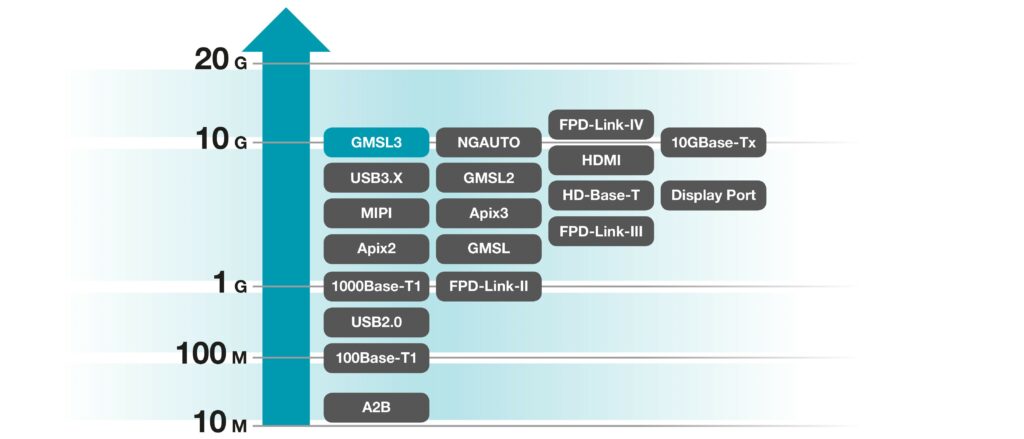
GMSL – What is it?
- GMSL – „Gigabit Multimedia Serial Link“
- Multi purpose interface for transmitting „serialized data“ = Multiple data / signals over a single wire (-pair)
- Optimized for power sensitive applications
- Cost efficient from components to handling
- Cost efficient chips and periphery
- Easy to guide and handle in assembling.
- High robustness, minimizing risk of failure
- Supporting Coax and STP cabling
- Originated in Automotive, ASIL compliant

The Introduction of GMSL to Embedded Vision Brings Many Unique Benefits to Industrial Applications
FRAMOS Value Add
The new GMSL mode (12 Gbit/s) is the latest generation that boasts faster speeds. FRAMOS customers can now seamlessly leverage GMSL for faster, larger resolution, and high data output sensors in their applications. FRAMOS´ SerDes solution, provides an extension to the PixelMate™ interface, integrating seamlessly into the existing FRAMOS Sensor Module (FSM) Ecosystem, which is available as an alternative option to the standard, shorter flex cable.
This implementation consists of two FRAMOS Functional Adapters (FFA) – with one serializer and one deserializer board – each connected together with an industry proven FAKRA coaxial cable, leveraged from the automotive industry. This delivers full data bandwidth (12 Gbps), at lengths of up to 14 meters. Modular by design, it can be seamlessly upgraded into any application, is fully compatible with other interfaces, and can be customized to suit any need.
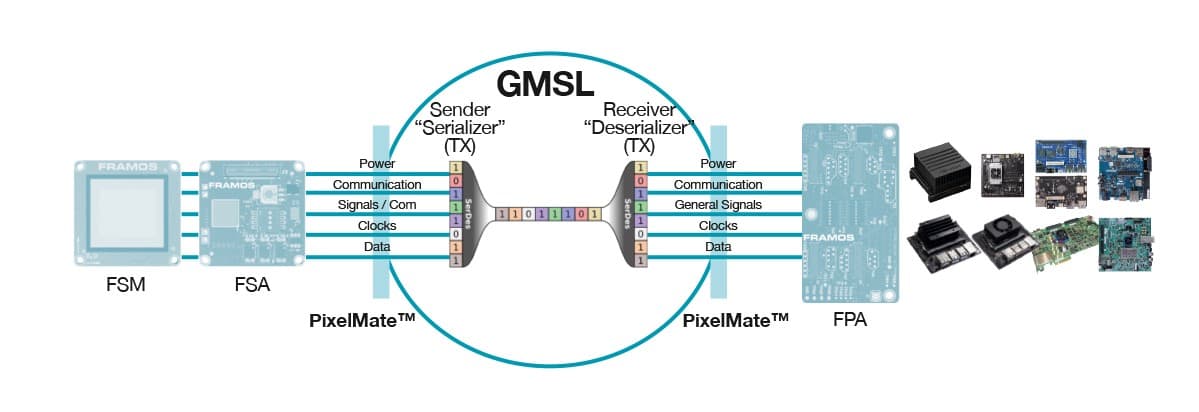
Available Products
Benefit from FRAMOS´s offering now
- A simple method to extend cable lengths within the FRAMOS Sensor Module Ecosystem
- Extend existing MIPI CSI-2 based FSM Development Kits, including those on the NVIDIA Jetson processor family
- Easy integration into the FRAMOS Partner network products that support the PixelMate™ interface or with other products supporting GMSL
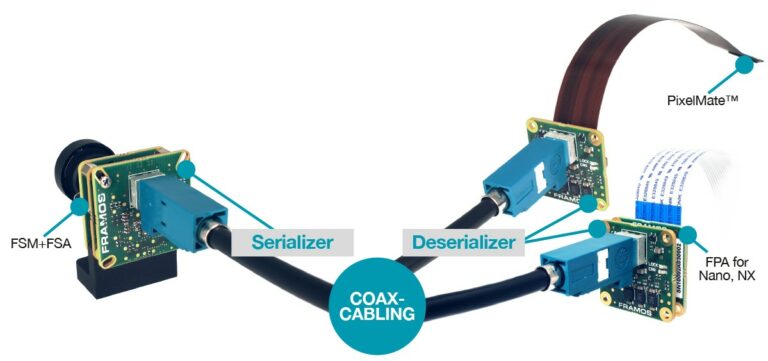
GMSL3 and GMSL2
Today, GMSL2 (6 Gbit/s) is known for being a stable interface for automotive applications. The cameras are powered by PoC (Power over Coax), so all the data, control signals, and power is sent through a single coaxial cable. This allows for flexible cable routing and ease of installation into small spaces. When camera data or video streams are transmitted over long distances, GMSL2 technology has a clear advantage over FPD-Link III. Compared to Ethernet, GMSL2 delivers 10x faster data rates, better EMC, 50% lower cabling costs, as well as lower power consumption – all which are major advantages for battery-powered applications.
The new GMSL3 mode (12 Gbit/s) is the latest generation of this standard that boasts faster data throughputs. The interface offers the latest image sensors to operate at full MIPI CSI-2 / D-PHY v1.2 specifications (4 lanes at 2.5 Gbps each). This enables vision systems, using uncompressed 4K resolution at 90 fps, to deliver smooth video streams. In addition, it is possible to integrate and transmit three 4K streams (30 fps) over a single Power over Coax (PoC) cable, enabling smooth and crystal-clear sensor fusion for applications like surround view or stereoscopic 3D image capture in real-time.
Both these generations of the GMSL standard are fully compatible with each other, which means that GMSL3 components can also be operated in GMSL2 mode and with hardware from the previous generation.
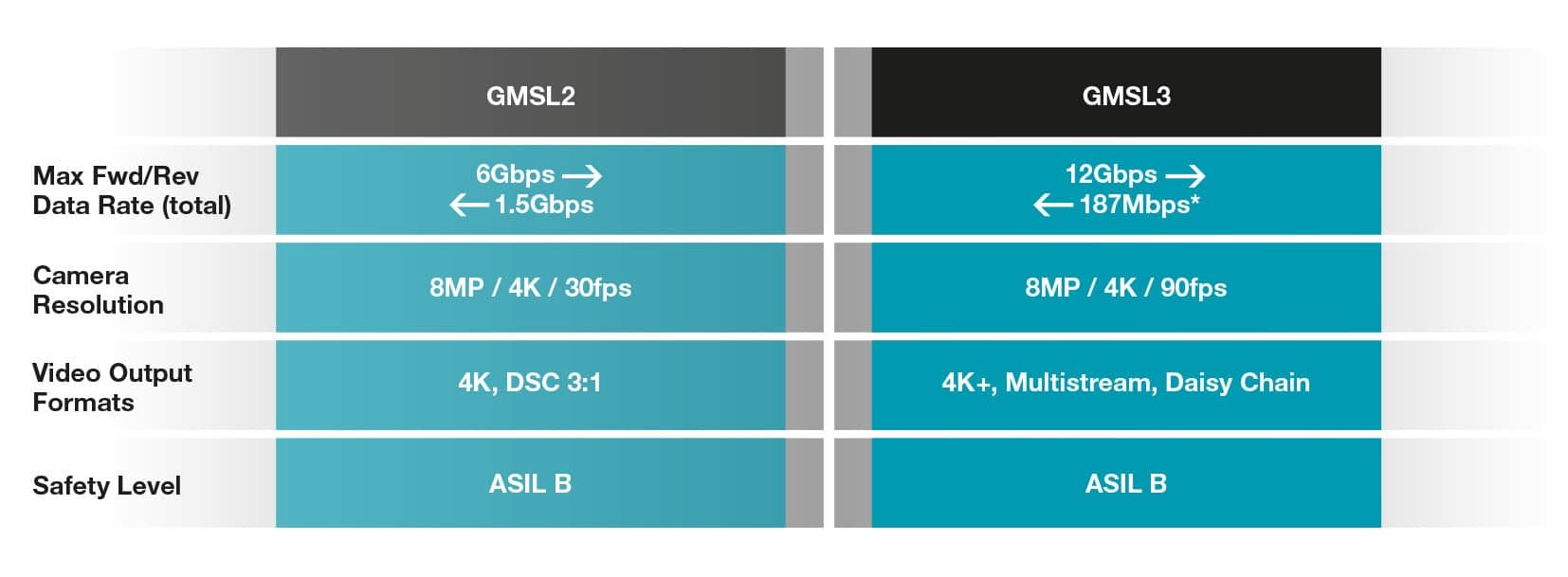
Applications
This interface is well suited for designs that are limited by the MIPI CSI-2 (D-PHY) length restrictions and/or require a highly durable cable with low power consumption and low cost.

Logistic Robots

Fleet Vehicles, Off-Highway Vehicles

Smart Agriculture

ATM's, Menu Boards

Large Drones


